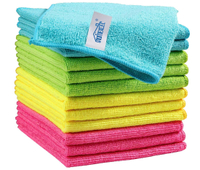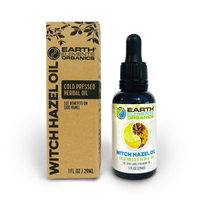5 things you didn't know you can clean with witch hazel
This medicine cabinet hero can clean your home as well as your face
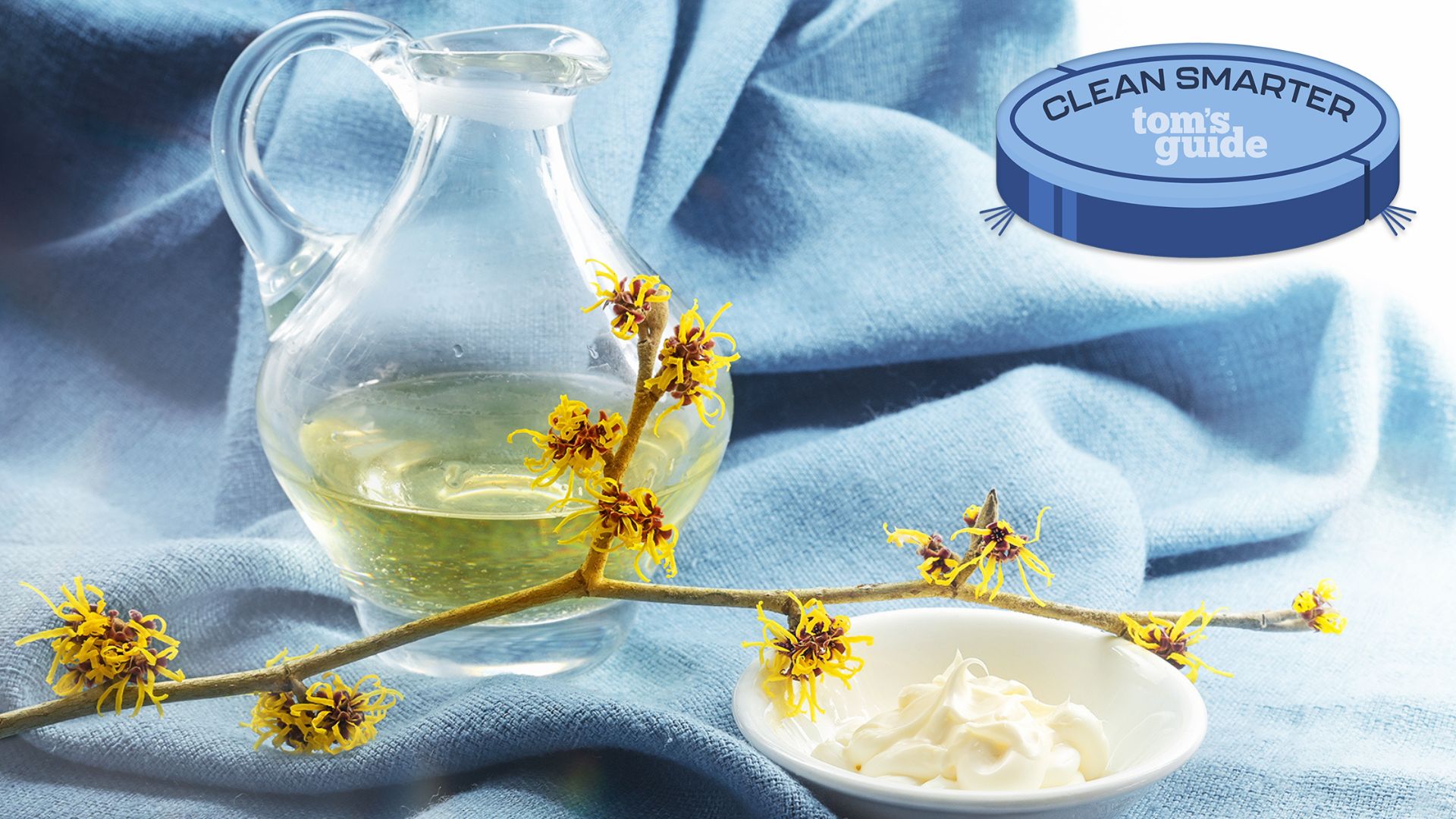
Natural cleaning proponents often tout the cleansing benefits of white vinegar, baking soda, and lemon juice—and for good reason.
These products can keep your home spotless without resorting to chemical products. But they’re not the only dirt-fighting powerhouses you might already have in your cabinets.
Witch hazel is typically used for beauty and first aid, but it can be a powerful addition to your home-cleaning arsenal.
We asked three cleaning experts to share their top tips on the cleaning power of witch hazel — and the surprising things you can use it for.
Why is witch hazel useful for cleaning?
Typically, witch hazel is an astringent used to clean minor cuts, soothing bug bites, and treat acne. It’s made from the dried leaves and bark of the witch hazel plant—a flowering shrub native to North America.
Its natural composition makes it a medicine cabinet staple for those looking to avoid chemical products. But how can it be used to clean your home?
“Witch hazel is a fantastic natural cleaning agent because of its mild astringent and antibacterial properties,” explains Vanessa Bossart, founder of GreenTerra Cleaning. “It’s especially great for light cleaning tasks where you don’t want to use harsh chemicals."
Sign up to get the BEST of Tom's Guide direct to your inbox.
Get instant access to breaking news, the hottest reviews, great deals and helpful tips.
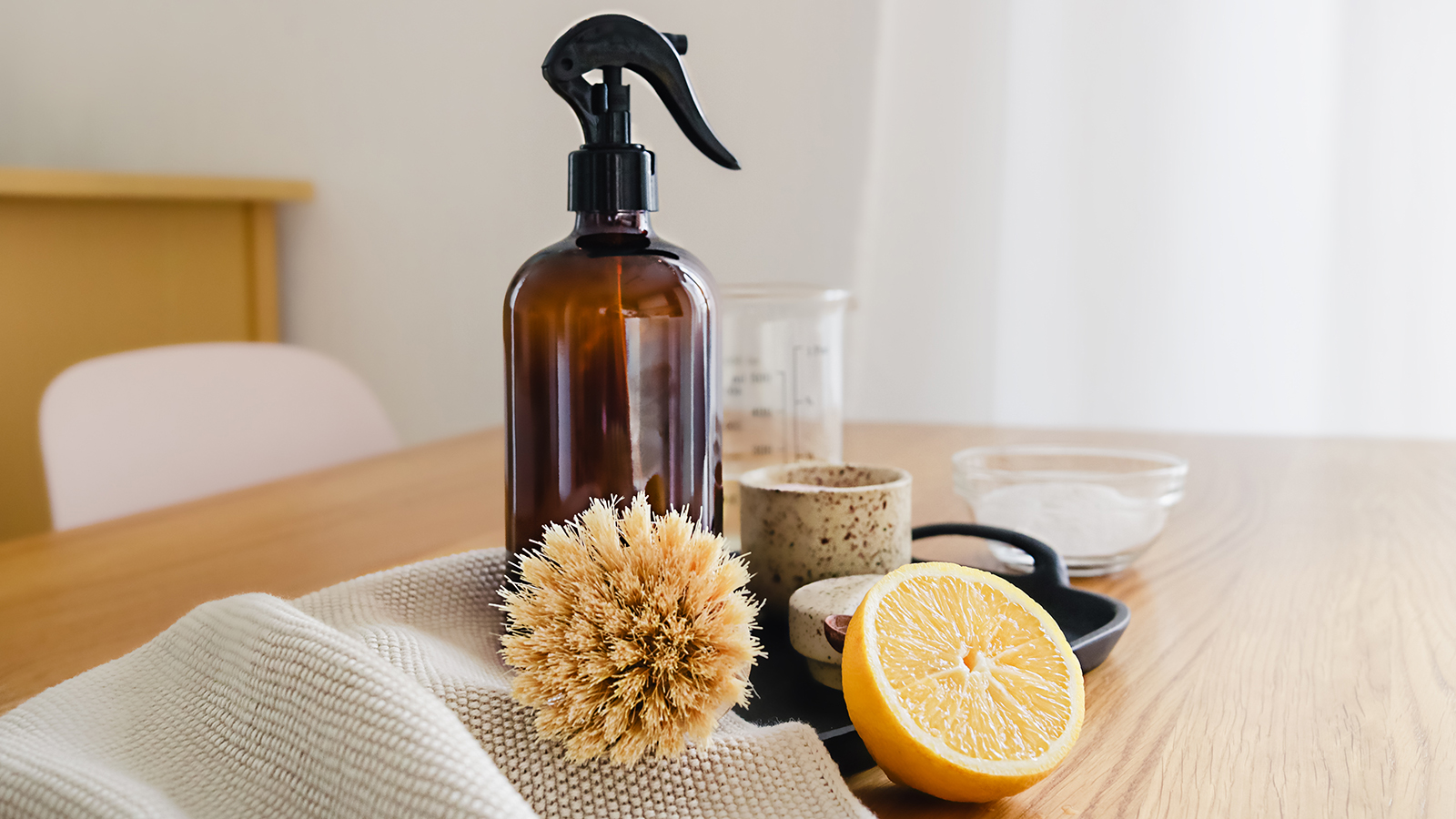
"Witch hazel neutralizes odors, leaving spaces smelling fresh"
In addition, it can be used in a variety of cleaning tasks. “You can use witch hazel in a variety of DIY cleaning products, from glass cleaners to surface sprays,” says Laura Ascher, founder of Our Oily House. “It's particularly effective at cutting through grease and grime, making it a great choice for tackling everyday messes.”
Not only can it clean, but it can also leave your home smelling fresh. “Known for its deodorizing effect, witch hazel neutralizes odors, leaving spaces smelling fresh,” adds Alicia Sokolowski, president and co-CEO of AspenClean. “Best of all, as a plant-derived product, witch hazel is biodegradable and environmentally safe.”
Ascher adds an important caveat, however. “Witch hazel is not an EPA-approved disinfectant and shouldn't be relied on to eliminate bacteria or viruses,” she explains. “Instead, it's best used as a complementary cleaner for light and everyday tasks.”
5 things you can clean with witch hazel
1. General surfaces
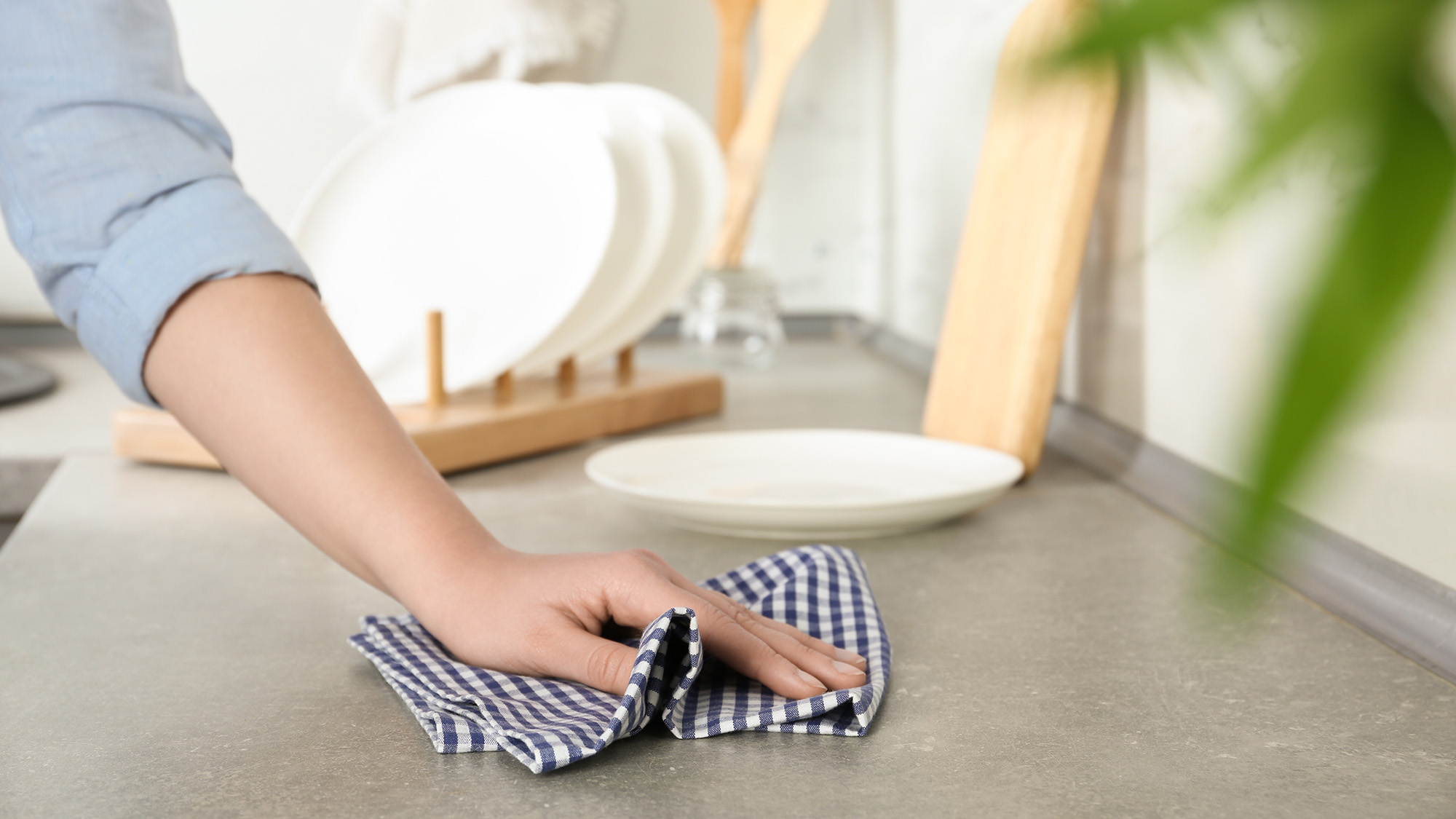
You can make an easy DIY cleaning spray with witch hazel to use on all kinds of surfaces around your home.
Simply mix equal parts water and witch hazel in a spray bottle and keep it on hand for all your cleaning needs. “Add a few drops of essential oil for a pleasant scent if needed,” Sokolowski recommends.
“To enhance its cleaning power, you can add a few drops of tea tree oil, which has natural disinfectant and antifungal properties,” says Bossart.
According to Ascher, “Having a multi-use product like this is a great way to reduce the number of specialized cleaners in your home, which can significantly cut down on single-use plastic containers and support a more sustainable lifestyle.”
These microfiber cloths will clean just about everything in your house. Designed to easily pick up dust and dirt without spreading it around, these are also machine washable. What's more, this multi-colored set allows you to color-code depending on the task.
2. Glass and mirrors
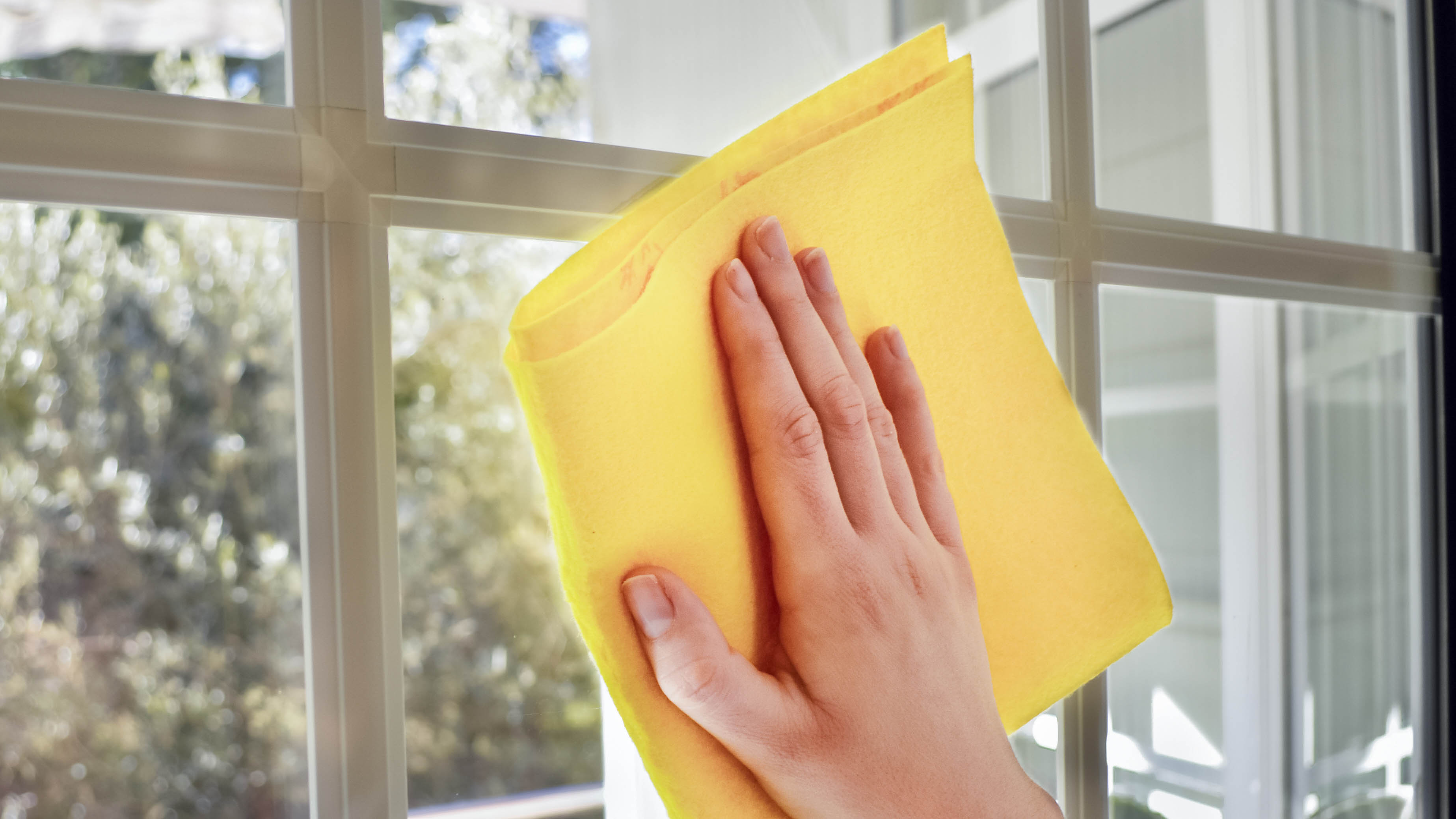
“This is my personal favorite use for witch hazel"
Witch hazel can also clean glass and mirrors for a sparkling finish. “Use undiluted witch hazel on a microfiber cloth to achieve a streak-free shine on glass and mirrors,” recommends Sokolowski.
“This is my personal favorite use for witch hazel,” says Ascher. “It evaporates quickly, making it ideal for cleaning glass surfaces, leaving them streak-free and sparkling every time.”
3. Carpets and upholstery
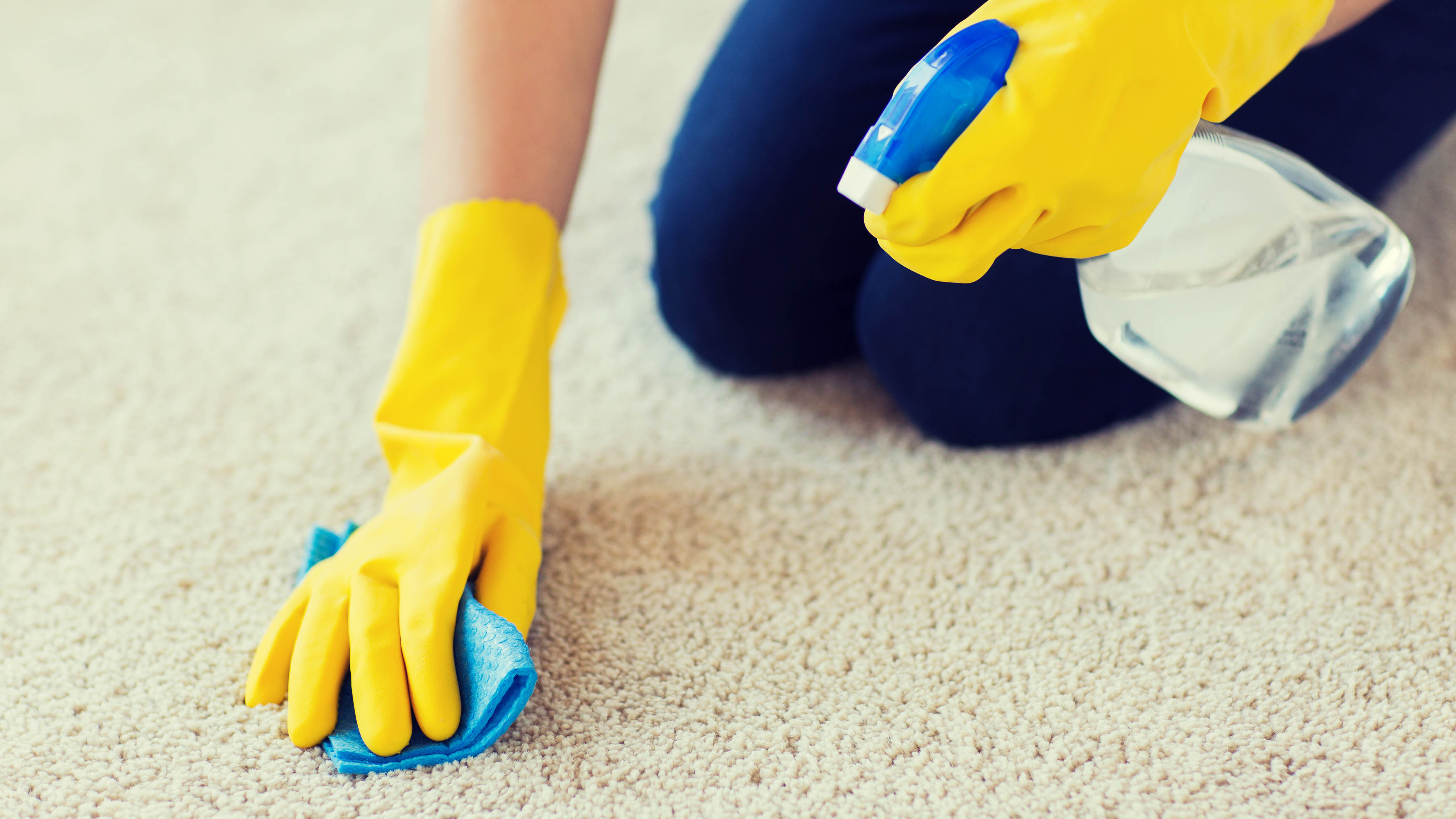
Carpeted floors can be plush and welcoming, but they can quickly become a stressor if you spill your dinner or glass of wine. Witch hazel can be used as a spot-cleaner on both carpeted floors and upholstered furniture.
“For spot treatment, mix witch hazel with water and a few drops of mild dish soap,” advises Ascher. “Gently blot stains on carpets or upholstery using this solution and a microfiber cloth.”
You can also make a fabric refreshing spray using witch hazel. “Mix witch hazel with water (2:1 ratio) and spray lightly on fabric surfaces to freshen them up,” says Sokolowski.
Just make sure you test it out first. “While witch hazel is generally safe for these surfaces, I always recommend performing a spot test on an inconspicuous area first,” recommends Ascher.
4. Stainless steel
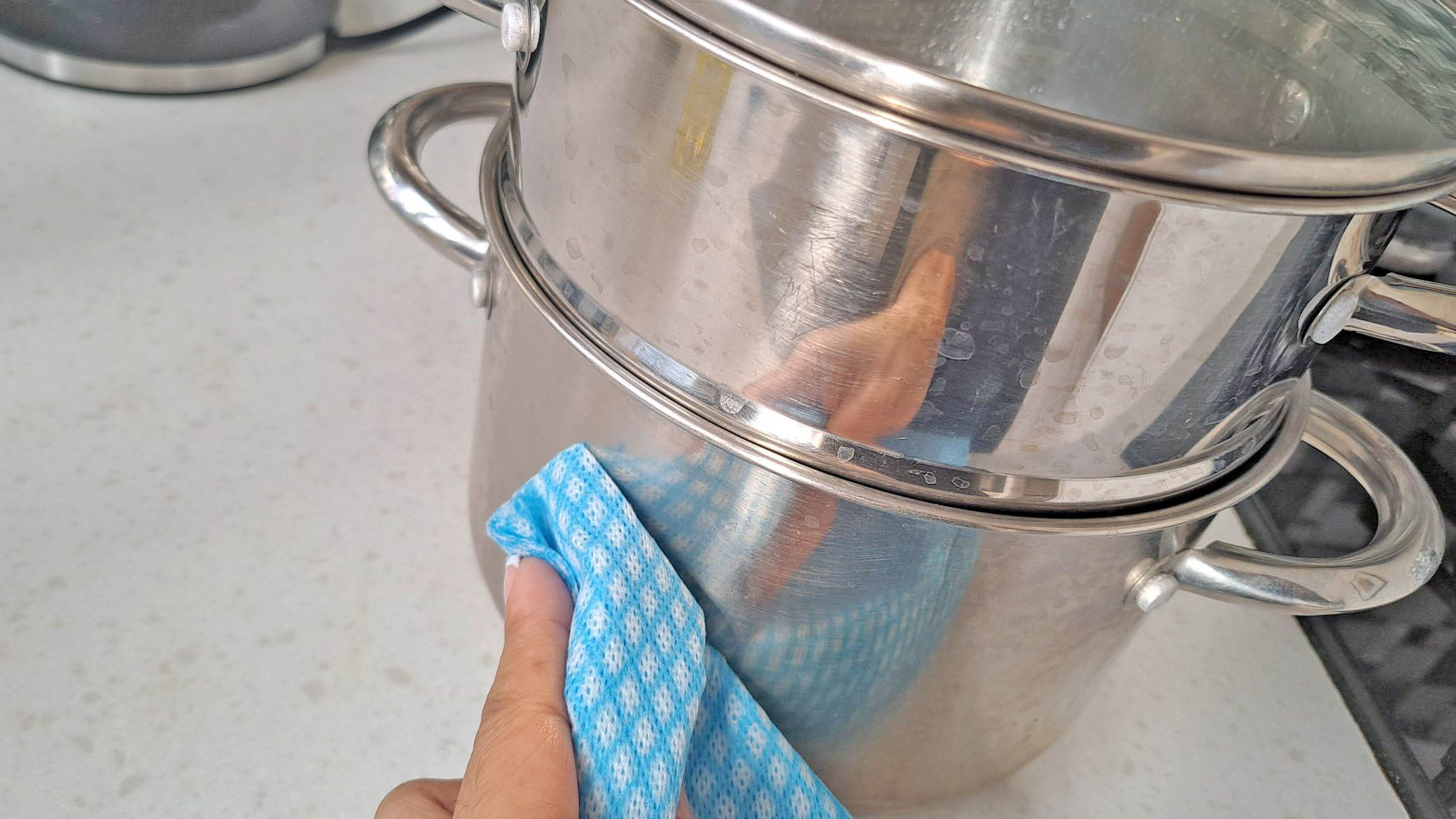
Stainless steel appliances are notorious for showing every fingerprint or streak of grime they come into contact with. Witch hazel can effectively clean stainless steel and leave it streak-free.
“Combine witch hazel with water for a simple, effective spray that works beautifully on counters, sinks, and even stainless steel kitchen appliances,” recommends Ascher. Witch hazel’s alcohol content means it evaporates quickly, leaving a streak-free shine in its wake.
This organic, cold-pressed witch hazel oil can be used as an ingredient in your homemade cleaning solutions.
5. Mold
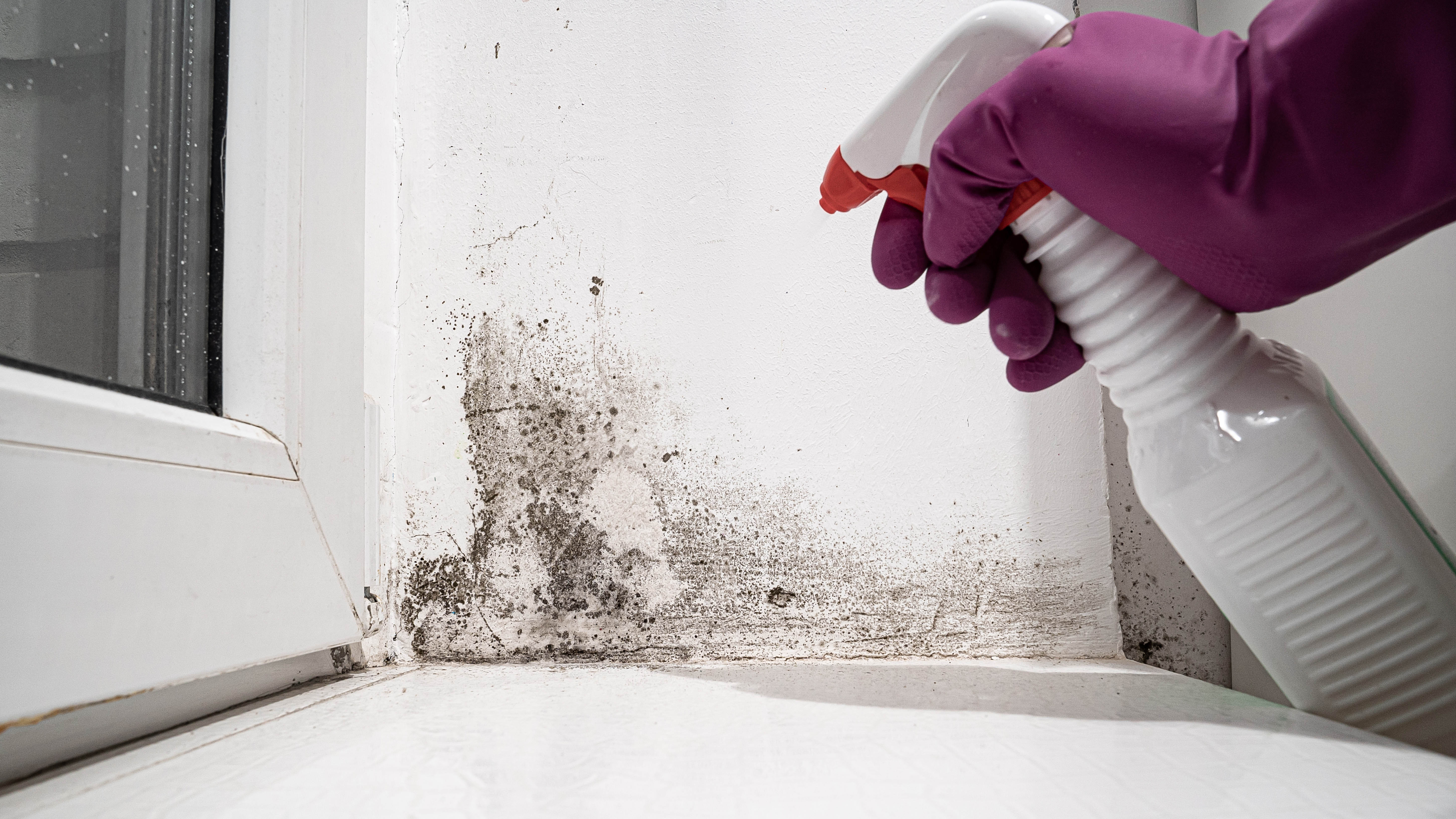
Combining witch hazel with tea tree oil creates a powerful cleaner ideal for use in humid areas, like kitchens and bathrooms, that are prone to mold.
“Regular application can prevent mold from growing naturally and also deter ants, making it a multipurpose solution for your home,” says Bossart. “When used with tea tree oil, you don’t need to rinse after application. Simply spray and wipe with a microfiber cloth. The residue left behind continues to work, helping to prevent mold and keep pests like ants at bay.”
What shouldn’t you clean with witch hazel?
Although witch hazel is an excellent general cleaner, it’s not meant for all purposes.
According to our experts, there are several things in your home that you shouldn’t clean with witch hazel.
“It’s not ideal for cleaning heavily soiled or greasy areas, as it lacks the degreasing power needed for those tasks,” says Bossart.
Instead, consider white vinegar. “Like witch hazel, vinegar is natural, eco-friendly, and effective at cutting through grime,” she says. “It’s especially good for degreasing surfaces and eliminating odors.”
You’ll also want to keep witch hazel away from unsealed or porous surfaces. “While witch hazel is generally safe, use caution on unsealed wood, stone, or other porous materials,” warns Ascher.
“While witch hazel is generally safe, use caution on unsealed wood, stone, or other porous materials”
“Its mild alcohol content can dry out these surfaces over time, potentially causing damage.” Sticking to specialized products for these surfaces is best to avoid permanent damage.
Finally, some claim that witch hazel is safe for electronic screens. However, using something else for your TV or computer monitor is best. “While it evaporates quickly, witch hazel can leave residue or seep into electronics, potentially causing damage,” says Sokolowski.
“I recommend checking with your device's manufacturer before using it,” advises Ascher. “This will help you avoid any risk of damaging the screen or its coating.”
More from Tom's Guide

Catherine Hiles has over a decade of experience writing and editing on various topics, including home improvement, personal finance, home finances, pet ownership, and parenting. Her work has been featured on BobVila.com, TIME Stamped, The Penny Hoarder, and more. In her spare time, Catherine enjoys running, reading, spending time with her kids and dogs, and tackling projects around the house.
You must confirm your public display name before commenting
Please logout and then login again, you will then be prompted to enter your display name.
